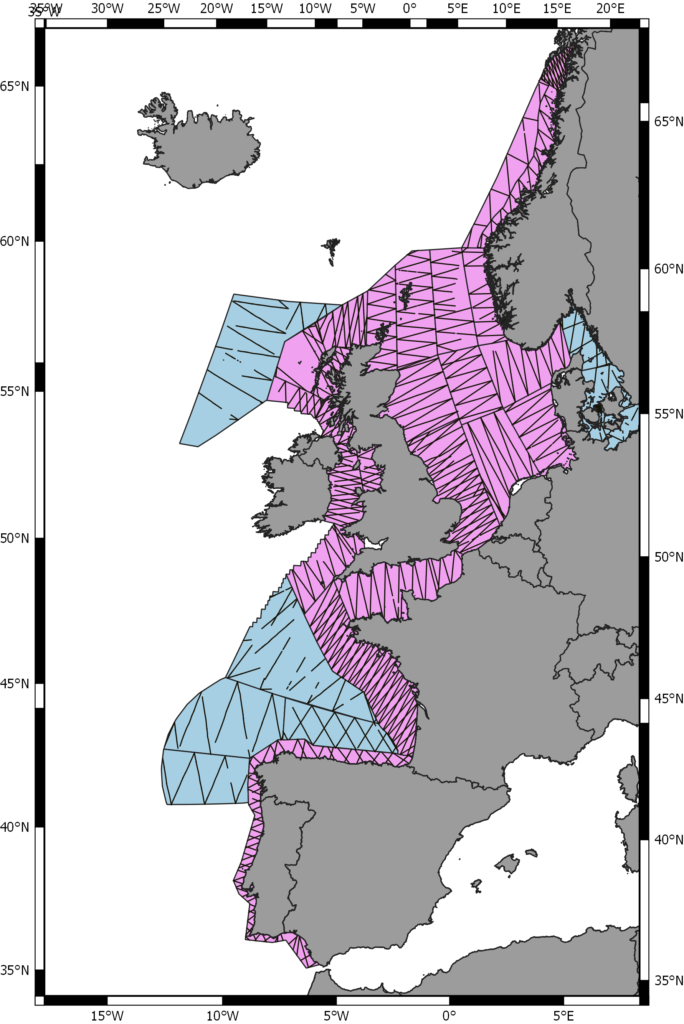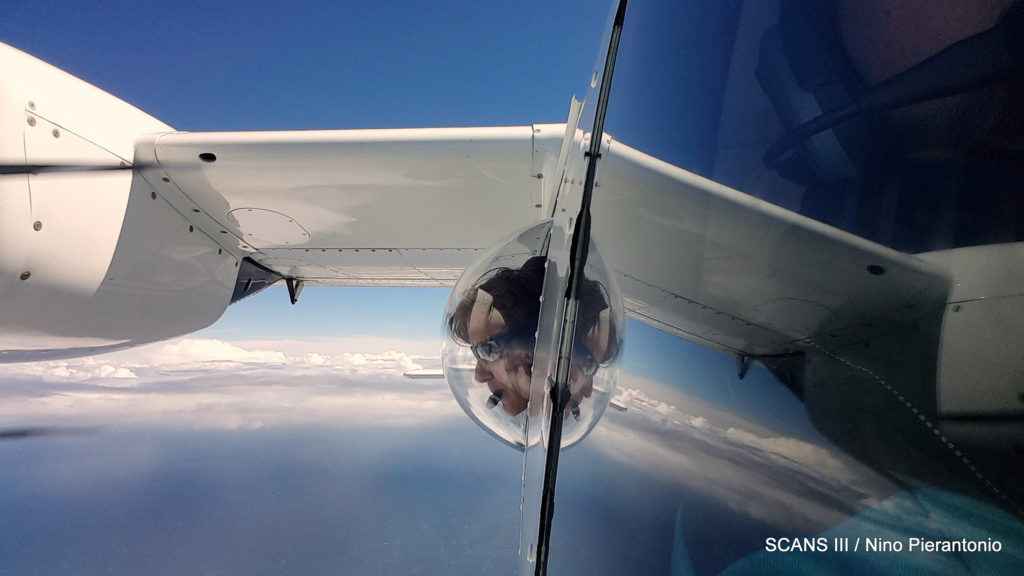Results
The SCANS-III Surveys
In July and August 2016, three ships and seven aircraft surveyed an area of 1.8 million square kilometres from the strait of Gibraltar in the south to Vestfjorden, Norway in the north over 6 weeks. Teams of observers searched along 60,000 km of transect line, recording thousands of groups of cetaceans from 19 different species. The survey (SCANS-III) is the third in a series that began in 1994 (SCANS) and continued in 2005 (SCANS-II).

The data were collected using sampling methods designed to allow correction for animals missed on the transect line, without which estimates of abundance would be negatively biased. This was achieved using two semi-independent teams of observers on the ships and using the “circle-back” aerial survey method, in which the aircraft flies a loop to re-survey the same piece of transect.

The new estimates of abundance will be integral to cetacean assessments undertaken for the Convention for the Protection of the Marine Environment of the North-East Atlantic (OSPAR) quality status report and for the EU Marine Strategy Framework Directive assessments of Good Environmental Status.
The results also enable the impact of bycatch and other anthropogenic pressures on cetacean populations to be determined, fulfilling a suite of needs under the EU Habitats Directive and the UNEP Agreement on the Conservation of Small Cetaceans in the Baltic, North east Atlantic, Irish and North Seas (ASCOBANS).
The most abundant species were harbour porpoise (467,000), common dolphins (473,000) and striped dolphins (441,000), with a further 184,000 either common or striped dolphins. Numbers of other species of dolphins estimated to be present were 33,000 bottlenose dolphins, 36,000 white-beaked dolphins and 16,000 white-sided dolphins.
Deep-diving whales that feed primarily on squid in offshore waters were estimated to be 29,000 pilot whales, 17,000 sperm whales and 8,000 beaked whales of several different species. Of the filter-feeding baleen whales, 15,000 minke whales and 27,000 fin whales were estimated to be present.
The results indicate that the shift seen in harbour porpoise distribution in the North Sea from the northwest in 1994 to the south in 2005 was maintained in 2016, with the highest densities found in the southwestern North Sea, and north and east of Denmark.
Download reports and shapefiles
